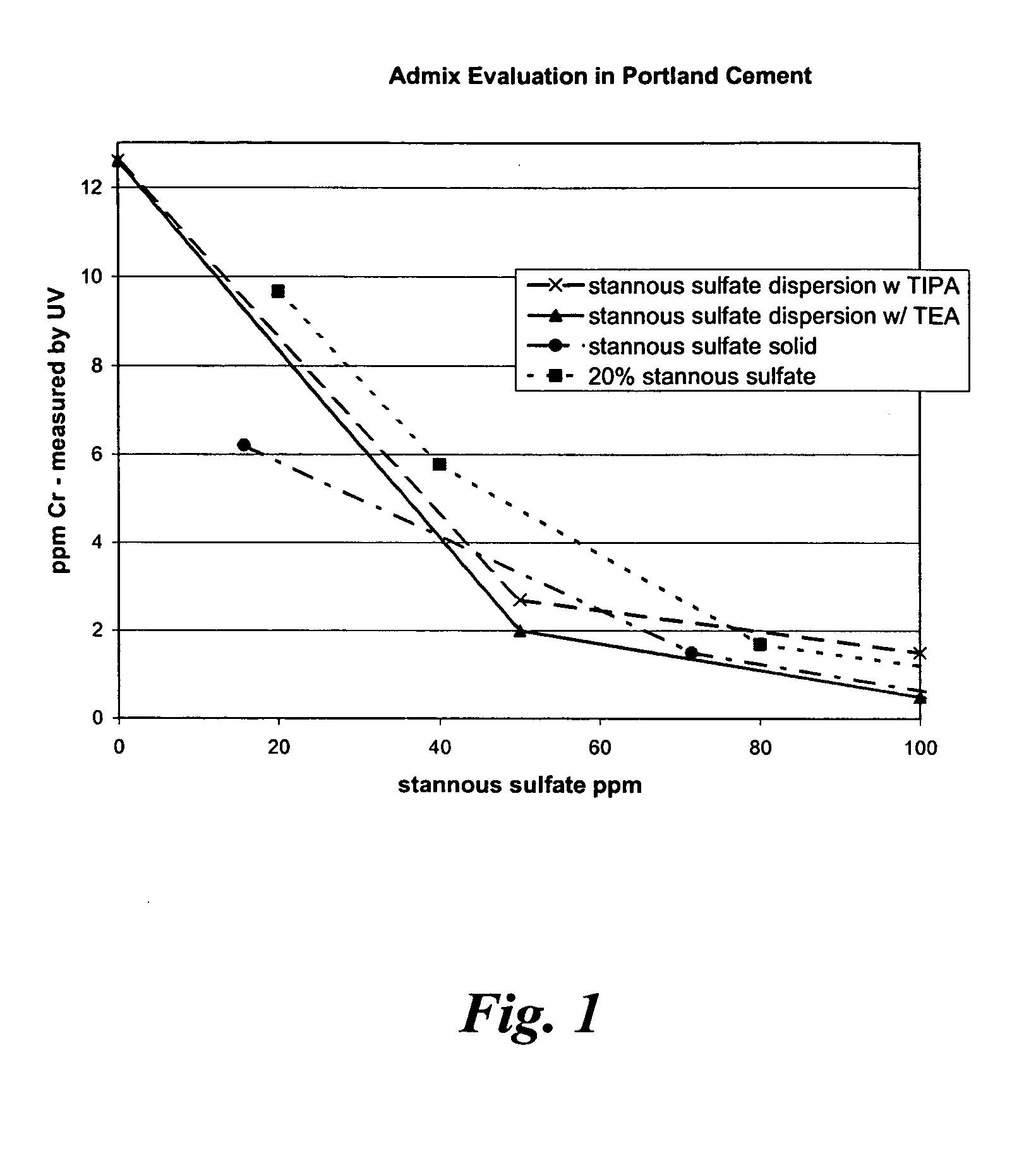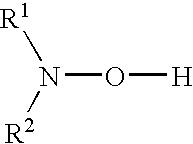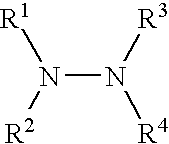Sulfate dispersion chromate reducer
a technology of sulfate dispersion and chromate, which is applied in the field of reducing agents, can solve the problems of high addition of iron (ii) sulfate in dry form, difficult to achieve the effect of reducing the chance of human inhalation of chemical dust, and reducing the chance of human inhalation
- Summary
- Abstract
- Description
- Claims
- Application Information
AI Technical Summary
Benefits of technology
Problems solved by technology
Method used
Image
Examples
example 1
[0059] A tin sulfate composition of the invention was formulated by mixing together tin sulfate particles (56 gm), and a diutan gum based VMA (44 gm). This VMA is commercially available from Grace Construction Products under the tradename V-MAR® 3. Other suitable VMAs could include xanthan gum, welan gum, and cellulose ethers, preferably dispersed in water using optional dispersants.
[0060] Table 1 shows a performance comparison between tin sulfate solid, tin sulfate dispersion, and tin sulfate solution. All additives were interground into a slag cement prepared in a laboratory ball mill. The proportions of materials in the cement prepared in the laboratory are as follows: 70% clinker, 25% slag, 2.8% gypsum, 1.9% plaster. The grinds were prepared at ambient temperature.
[0061] The chromate reducing additives were added at the dosages described in Table 1. The dosage for the active stannous sulfate portion is also given. Soluble ppm Cr (measured as chromate) is given for the cold gri...
example ii
[0064] A similar experiment was done using a cement having the following percentages of components: 95% clinker, 2.8% gypsum, 1.9% plaster. The respective performances in terms of chromate reduction for the samples are illustrated in Table 2 below.
TABLE 2ColdHeatTinGrindTreatedAdditiveSulfate(ppm)(ppm)Chromate Reducing Additive(ppm)(ppm)CrCr56% stannous sulfate dispersion 179100141856% stannous sulfate dispersion 357200 1 520% stannous sulfate solution1000200 91920% stannous sulfate solution2000400BDL 1
example iii
[0065] Another experiment was run using a cement having the following component percentages: 65% clinker, 7.5% slag, 15.1% limestone, 7.5% natural pozzolon, 2.8% gypsum, and 1.9% plaster, the percentages being given in terms of total weight. In this case 200 ppm tin sulfate delivered in the dispersion matched the performance of 300 ppm tin sulfate delivered in a solution, in the heat treated cement. Results are shown in Table 3 below.
TABLE 3ColdHeatTinGrindTreatedAdditiveSulfateppmPpmChromate Reducing AdditivePpmppmCrCrNone8856% stannous sulfate 35720023dispersion20% stannous sulfate solution150030033
PUM
| Property | Measurement | Unit |
|---|---|---|
| temperature | aaaaa | aaaaa |
| temperatures | aaaaa | aaaaa |
| temperatures | aaaaa | aaaaa |
Abstract
Description
Claims
Application Information
 Login to View More
Login to View More - R&D
- Intellectual Property
- Life Sciences
- Materials
- Tech Scout
- Unparalleled Data Quality
- Higher Quality Content
- 60% Fewer Hallucinations
Browse by: Latest US Patents, China's latest patents, Technical Efficacy Thesaurus, Application Domain, Technology Topic, Popular Technical Reports.
© 2025 PatSnap. All rights reserved.Legal|Privacy policy|Modern Slavery Act Transparency Statement|Sitemap|About US| Contact US: help@patsnap.com



